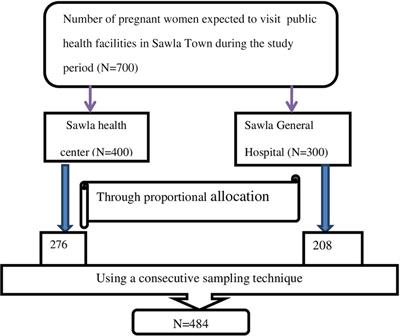- 1School of Public Health, College of Health Sciences and Medicine, Wolaita Sodo University, Ethiopia
- 2Department of Maternal and Child Health, Sawula Town Health office, Gofa Zone, Ethiopia
- 3School of Nursing, College of Health Science and Medicine, Wolaita Sodo University, Wolaita Sodo, Ethiopia, Ethiopia
- 4Department of Nursing, Hawassa Health Science College, Hawassa, Ethiopia, Ethiopia
- 5Dilla University, Ethiopia
- 6Department of Midwifery, College of Medicine and Health Science, Dilla Univeristy, Dilla, Ethiopia, Ethiopia
The final, formatted version of the article will be published soon.

Receive an email when it is updated
You just subscribed to receive the final version of the article
Background: Sexual transmitted infections (STI) always result in a wide range of health problems if left untreated. It leads to an adverse birth outcomes, including stillbirth, fetal loss, neonatal death, premature and low birth-weight. Although great effort has been made to reduce STIs nationally, their incidence remains high in Ethiopia and, their synergism combined with other factors in the country, calls for urgent action. Therefore, this study aimed to identify the determinants of triplex STIs among pregnant women attending antenatal care (ANC) in sawula town public health facilities, Gofa, Southern Ethiopia.
Methods: A cross-sectional study design was conducted among a total of 484 pregnant women attending ANC in sawula town public health facilities, southern Ethiopia from May to July, 2022. Data were collected from pregnant women’s serum using HIV-rapid test, HBsAg Rapid Test Device, and VDRL for HIV, HBV, and Syphilis respectively. Descriptive statistics such as frequency and percentage were used to describe each relevant variable. Logistic regression analyses were used to identify determinants of STIs.
Results: A total of 484 pregnant women attending antenatal care was reviewed. The mean age of women was 24.0 ± (SD 4.6 years) and 191 (40.7%) women completed their secondary education and above. The overall Seroprevalance of triplex STI (HIV, HBV, and Syphilis) among pregnant women was 6.8%. Pregnant women who were not able to read and write (AOR= 4.1, 95% CI= 2.3-24.3), history of tattooing (AOR= 5.2, 95% CI= 1.8-11.3), history of abortion (AOR= 2.7, 95% CI= 1.3-5.5), and history of multiple sexual partners (AOR= 5.2, 95% CI= 2.1-14.4) were associated with STI among pregnant women.
Conclusion: Our study showed that determinants which were identified by our study to be highly associated with STIs can substantially be improved by strengthening the existing health education and promoting primary education to bring further behavioral change.
Keywords: Triplex, HIV, HBV, Syphilis, southern Ethiopia
Received: 20 Mar 2023; Accepted: 05 Jun 2023.
Copyright: © 2023 Israel, Hizkel, Geta, Feleke, Samuel and Markos. This is an open-access article distributed under the terms of the Creative Commons Attribution License (CC BY). The use, distribution or reproduction in other forums is permitted, provided the original author(s) or licensor are credited and that the original publication in this journal is cited, in accordance with accepted academic practice. No use, distribution or reproduction is permitted which does not comply with these terms.
* Correspondence: Mr. Eskinder Israel, School of Public Health, College of Health Sciences and Medicine, Wolaita Sodo University, Sodo, Ethiopia






GIPHY App Key not set. Please check settings